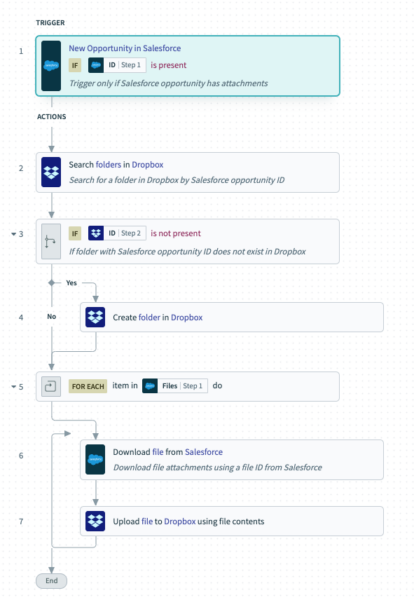The steps taken following a sale are just as critical as the lead up.
Any delays in processing an order prevent the client from receiving the product they need, when they need it, while postponing your timeline for getting paid. In some cases, the issue might go so far as to convince the client to take their business elsewhere, thereby breaking their relationship with your organization before it began.
To help avoid this scenario, you can engage in sales order automation.
How do you automate this part of the order to cash process? We’ll share some examples to help you ideate specific solutions, but let’s start by defining this type of automation.

Transform your order to cash process
Learn how you can improve upon your overarching order operations by exploring our O2C maturity model.
What is sales order automation?
It’s the use of automation to streamline the process of inputting and processing orders in your systems.
Its implementation involves a platform that can listen to particular business events (e.g. a sales order gets created), where once an event is identified, the platform can carry out the appropriate actions across your applications, data, and teams either in real time or at specific points in the future.
How to perform sales order automation
Let’s break down a few examples that bring this definition to life.
1. Keep customer records in sync across your apps
Relying on employees to update customer records in an app—let alone several—isn’t scalable.
It leaves your organization prone to human errors, as employees might make data-entry-related mistakes or simply forget to input the customer data in specific apps altogether. Either scenario can lead to all kinds of issues related to onboarding the customer and invoicing them.
To mitigate this situation and to free employees from the burden of performing extensive data entry, you can connect your CRM with your ERP system and implement the following automation:

1. Any time a customer is marked as closed won in a CRM like Salesforce, the workflow gets triggered.
2. An enterprise automation platform checks to see if the customer already exists in an ERP system like NetSuite.
3. If the customer exists in the system, their account gets updated, whereas if they don’t, their account gets created and then updated based on the corresponding fields in your CRM.
2. Upload client documents to your file hosting service in real time
In moving leads through the sales cycle, your reps will create, receive, and manage all kinds of materials, from order forms to non-disclosure agreements.
To help your reps share and organize these items with ease, you can implement the following automation:

1. Once attachments get added for a new prospect or client (the screenshot above focuses on the former) in your CRM, the workflow gets triggered.
2. An enterprise automation platform checks to see if a folder already exists for them in an app like Dropbox. If it doesn’t, a folder gets created.
3. The enterprise automation platform downloads the file attachments and uploads them into the folder.
3. Notify reps when orders arrive
Given all the tasks a sales rep faces, their ability to quickly identify opportunities that close is compromised; as a result, their timeline for processing sales and moving customers to the onboarding stage can be less than desirable.
You can enable reps to more easily identify deals that come in in real time by implementing the following automation:

1. Once a client signs the order document via an app like DocuSign, the workflow gets triggered.
2. A platform bot—in this case, Workbot—goes on to share this development with the assigned rep via a message in their business communications platform (e.g. Slack). The message itself can include additional context on the sale, such as key details on the order and background information on the signee and their organization.
Related: How to automate order processing
Benefits of sales order automation
Here are just a few reasons to automate your sales order process:
- It empowers your team to deliver a best-in-class customer experience. By managing sales orders more efficiently, your teams can move faster in providing clients with the products they purchased.
In addition, since your customer-facing employees aren’t bogged down with manually-intensive tasks, they can focus more on providing clients with personalized and actionable guidance on using your product.
- It supercharges your organization’s employee experience. The manually-burdensome activities that fall under order entry aren’t just a productivity suck—they’re also unpleasant to perform.
By freeing customer-facing employees from performing these basic order management activities and allowing them to focus on the strategic, business-critical work they value instead, you’re all but ensuring that they’re more engaged and satisfied.
- It improves business-critical performance metrics. Delivering improved experiences to customers and employees naturally improves each group’s level of retention and engagement with your organization.
The impact, however, can go even further for both stakeholders. In the case of employees, they’re more likely to produce high-quality work and behave morally; while customers are willing to spend more on your goods and services.
- It moves you closer to implementing an intelligent order to cash process. Simple task automations like those referenced above are powerful, but once your team sees success from them, there’s an opportunity to take your automations to the next level—and a level after that.
We’re referring to the four levels that make up the O2C maturity model we created with the Connor Group.

The automations covered throughout this article can move your order to cash business process from level 0 to level 1. This might leave you wondering how you’d go about moving from level 1 to level 2 and from level 2 to level 3.
The answer: By using Workato, the leader in enterprise automation.
